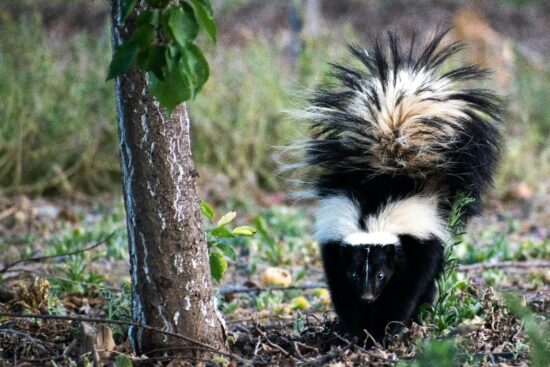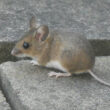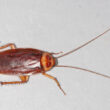When you think about what skunks eat, you probably picture them rummaging through trash cans or spraying unfortunate pets. But these black and white critters have a much more interesting menu than most people realize. Skunks are omnivores, which means they eat both plants and animals. They’re not picky eaters at all and will gobble up just about anything they can find.
The skunk diet changes throughout the year based on what’s available. During spring and summer, they feast on protein-rich insects and small animals. When fall and winter roll around, they switch to more fruits, nuts, and whatever else they can scavenge. This flexibility is one reason skunks do so well in different environments, from forests to suburban backyards.
Ready to learn about the surprising variety of foods these striped animals enjoy? Here are some things that make up what skunks eat on a regular basis.
1. Insects and Larvae
Insects are the absolute favorite food for skunks. In fact, bugs and their larvae make up about 70% of the skunk diet. These protein-packed snacks include beetles, crickets, grasshoppers, and all kinds of wriggly larvae that live in the soil.
Skunks have some pretty clever tricks when it comes to eating insects. They’ll roll caterpillars on the ground to remove all the irritating hairs before munching them down. They do the same thing with beetles that spray defensive chemicals, making the beetle use up its stinky spray first.
During spring and summer, when insects are everywhere, skunks spend most of their time hunting these six-legged meals. They use their strong front claws to dig into the ground and flip over rocks and logs to find hidden bugs. This makes skunks incredibly helpful for gardeners and farmers because they eat tons of pests that would otherwise destroy crops. Japanese beetle grubs, cutworms, and hornworm larvae don’t stand a chance against a hungry skunk.
2. Small Rodents
Mice, rats, voles, and shrews are all on the menu when it comes to what skunks eat. Believe it or not, skunks are excellent hunters of these small mammals. Some wildlife experts say skunks might even be better mousers than cats!
Small rodents become especially important during winter months when insects are harder to find. Studies have found that mammals (mostly mice) make up about 14% of the skunk diet. Skunks hunt these furry creatures using their incredible sense of smell and sharp hearing. Even though they can’t see very well, their other senses help them track down rodents hiding in burrows or nests.
When skunks move into areas near human homes, they’re often looking for mice and rats. So if you have a skunk living under your porch, it might actually be helping with your rodent problem. They’ll search through sheds, barns, and garages specifically to hunt down these small animals.
3. Bees, Wasps, and Honey
This might be the most surprising thing about what skunks eat. These fearless animals will actually attack beehives and wasp nests, even though they get stung in the process. Their thick, fluffy fur protects them from most stings, so they just power through the pain to get to the tasty treats inside.
Skunks eat the adult bees and wasps, the larvae, and the honeycomb. They especially love honey and will eat as much as they can get. When a skunk finds a beehive, it scratches at the entrance and then eats the guard bees that come out to investigate. Mother skunks even teach this brave behavior to their babies.
Yellow jacket and hornet nests that are built in the ground are easy targets for skunks. They’ll dig up the entire nest and devour everything inside. This part of the skunk diet shows just how tough and determined these animals can be when they want a meal.
4. Bird Eggs and Nestlings
Ground-nesting birds need to watch out for skunks. These opportunistic eaters will raid nests to eat eggs and baby birds that can’t fly yet. Ducks, quails, plovers, and other birds that build nests on the ground are particularly at risk.
You can tell when a skunk has eaten bird eggs because of the way they open them. Skunks crush the egg on one end with the edges pushed inward. They usually don’t carry eggs very far, so you’ll find the broken shells within a few feet of the nest.
Skunks will also sneak into chicken coops to steal eggs. When they do kill chickens, they typically only take one or two birds and focus on eating the head and neck area. Eggs are much easier targets though, and they make up a bigger part of what skunks eat compared to actual adult birds. Protecting your chicken coop with buried wire fencing can keep these nighttime raiders out.
5. Fruits and Berries
When you look at the skunk diet, fruits and berries play a surprisingly big role. These sweet treats make up about 22% of what skunks eat. They enjoy all kinds of berries including strawberries, blackberries, blueberries, and raspberries during the summer months.
Skunks also eat tree fruits like apples, cherries, grapes, and mulberries. In the wild, they’ll munch on chokeberries, elderberries, cranberries, and wild grapes. Since skunks can’t climb trees very well, they mostly eat fruits that have fallen to the ground. This means they often eat overripe or even slightly rotting fruit, which doesn’t bother them at all.
Fall is when skunks really load up on fruits to build fat reserves for winter. These high-sugar foods give them lots of energy and help them pack on pounds before the cold weather arrives. Winter months see skunks continuing to search for any remaining fruits, though pickings are much slimmer.
6. Grubs and Earthworms
If you’ve ever woken up to find small holes all over your lawn, a skunk was probably hunting for grubs and earthworms. These soil-dwelling creatures are a huge part of what skunks eat, especially during late summer and fall.
Skunks create shallow holes about 3 to 4 inches deep when they dig for grubs. They push their noses into the grass and then use their front paws to dig out the area. Sometimes they make so many holes that they blend together into one big patch of torn-up turf. While this can be annoying for homeowners, the skunk is actually doing you a favor by eating grubs that would damage your grass roots.
Japanese beetle larvae and June beetle grubs are particular favorites in the skunk diet. These grubs feed on grass roots and can kill your lawn if left unchecked. Skunks also gobble up cutworm larvae, hornworm larvae, and any other soft-bodied insects they find in the soil. Their strong claws make them expert diggers, perfect for uncovering these buried snacks. Earthworms round out this category, providing moisture and protein.
7. Nuts and Seeds
As fall arrives and skunks prepare for winter, nuts and seeds become a more important part of what skunks eat. These high-calorie foods help skunks build up fat reserves that will keep them warm during cold months.
Walnuts, pecans, hickory nuts, and acorns are all popular choices. Skunks can’t crack really hard shells, so they prefer nuts that have started to soften or ones that other animals have already opened. Sunflower seeds are another favorite, and skunks will happily clean up any seeds that fall from bird feeders.
The skunk diet also includes various plant roots during this time. Roots provide nutrition when other foods are scarce. Skunks dig them up using the same techniques they use to find grubs. While nuts and seeds aren’t as exciting as hunting live prey, they’re essential for skunk survival during the winter when they enter a state of reduced activity but don’t fully hibernate.
8. Reptiles and Amphibians
Frogs, salamanders, small snakes, and lizards all end up as skunk snacks. These cold-blooded creatures are relatively easy to catch because they move slowly, especially when temperatures drop. What makes this part of the skunk diet really interesting is that skunks are immune to snake venom. This means they can eat poisonous snakes like rattlesnakes without any problem.
Skunks hunt for these animals near water sources and in damp areas where amphibians like to hang out. Their keen sense of smell helps them locate frogs hiding under leaves or in shallow burrows. Small snakes and lizards that come out at night often cross paths with foraging skunks.
Turtle eggs are another reptile-related food that skunks love. They’ll dig up turtle nests and eat all the eggs inside. This behavior makes skunks a challenge for turtle conservation efforts in some areas. The variety of reptiles and amphibians in the skunk diet shows just how adaptable these animals are when it comes to finding food throughout the year.
9. Carrion and Garbage
Skunks aren’t above eating dead animals they find. Carrion (the meat of dead animals) makes up about 5.4% of what skunks eat according to scientific studies. If they come across a dead bird, rodent, or other animal, they’ll scavenge it for an easy meal.
This scavenging behavior extends to human garbage too. Skunks living in suburban and urban areas quickly learn that trash cans and compost bins are gold mines of food. Leftover meat, spoiled fruits, and pretty much any food scraps are fair game. Pet food left outside overnight is like a dinner invitation for skunks.
The skunk diet becomes even more dependent on garbage during winter when natural food sources are hard to find. Unsecured trash cans attract not just skunks but also the insects and rodents that live around garbage, creating a whole buffet. While this scavenging habit makes skunks seem like pests, they’re really just doing what comes naturally to survive. Keeping garbage in sealed containers and not leaving pet food outside can prevent skunks from becoming regular visitors to your property.
10. Garden Vegetables and Crops
The final category of what skunks eat includes the vegetables and crops from gardens and farms. Corn is a particular favorite, though skunks usually only eat the lower ears that they can reach from the ground. Tomatoes, carrots, and squash also get nibbled on when skunks wander through gardens at night.
Skunks prefer vegetables that have fallen to the ground or are easy to access. They’re not aggressive crop raiders like some other animals, but they will take advantage of easy meals. When food is plentiful elsewhere, they mostly ignore gardens. But during times when insects and small animals are scarce, the skunk diet shifts more toward plant-based foods.
This is when skunks might become a bigger nuisance for gardeners. They’ll dig up root vegetables and eat whatever produce they can find. The good news is that the same skunks eating your vegetables are probably also eating the grubs and insects that would damage your plants. It’s a tradeoff that many gardeners learn to accept, especially since skunks help with natural pest control.


